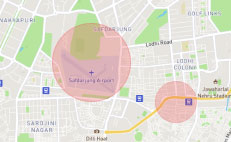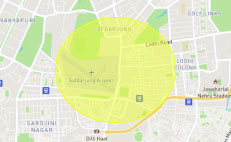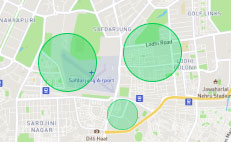Drones are Unmanned Aerial Vehicles (UAV’s) or Remotely Piloted Aerial Systems (RPAS). Ministry of Civil Aviation, Government of India has published the ‘Drone rules,2021’. These rules help liberalise drone flying in India, but one need to play by the rule book. We have put together a few for your understanding.
-
- Registration: No person shall operate a drone unless they register on the Digital Sky platform and obtaining a unique identification number, unless exempted as per the drone rules, 2021. This rule is applicable even for drone fliers including drones used for Non-commercial use
- Drone classification: Basis weight
- Nano. Weight less than or equal to 250gms
- Micro. Weight more than 250gms but less than or equal to 2 kgs
- Small. Weight more than 2kg but less than or equal to 25 kgs
- Medium. Weight more than 25kg but less than or equal to 150 kgs
- Heavy. Weight more than 150 kgs
-
Flying zones: Indian airspace is divided into three zones

Red Zone 
Yellow Zone 
Green Zone - Red zone: It’s a No-fly zone or a ‘No Drone zone’, these are restricted areas like Airports, Military base etc. Drones can only be flown in these zones with a prior permission from the Central government
- Yellow zone: Close to a restricted area where on need to take permission to fly a drone. Example. 8 to 12 kms from the perimeter of an operational airport. These permissions need to be taken from the concerned Air traffic control authority before flying
- Green zone: Large parts of India is in a green zone. One can fly the drone in this space up to a vertical distance of 400 feet or 120 meters. Any drone up to 500kgs can be flown during daytime in this zone
- For the comfort of everyone, Government of India has released India’s air map for drone operations, available on DGCA’s (Directorate General of Civil Aviation) Digital Sky platform. Click here to know more about.
https://digitalsky.dgca.gov.in/home
- Drone Pilot license: Drone pilot license is mandatory for anyone using drones for commercial use. This license needs to be enlisted on the digital sky platform after obtaining a certified drone pilot course. Nano and Small drones used for Non-commercial use are exempted from this category
- Insurance: Third party insurance is mandatory for all the drones or UAV’s (Unmanned Aircraft Systems), like vehicles as per the Motor Vehicles act of 1988. This is to safeguard from any damage caused to life or property by such an UAV. Nano drones can operate the drone without a third-party insurance
NeoSky and its associate companies will train their consumers and customers on these rules through different aids like Direct communication, Software, User manual etc. This is to ensure that our consumers and customers can fly the drones hassle-free , by staying within the boundaries set by the regulators. Always remember, when in doubt, check with an expert. Happy flying !
Complete Drone rules, 2021.
https://static.pib.gov.in/WriteReadData/specificdocs/documents/2022/mar/doc202232932501.pdf
In case if there are any flaws in what we mentioned or any other feedback, please write to us at contact@neosky.co.in, rpto@neosky.co.in
